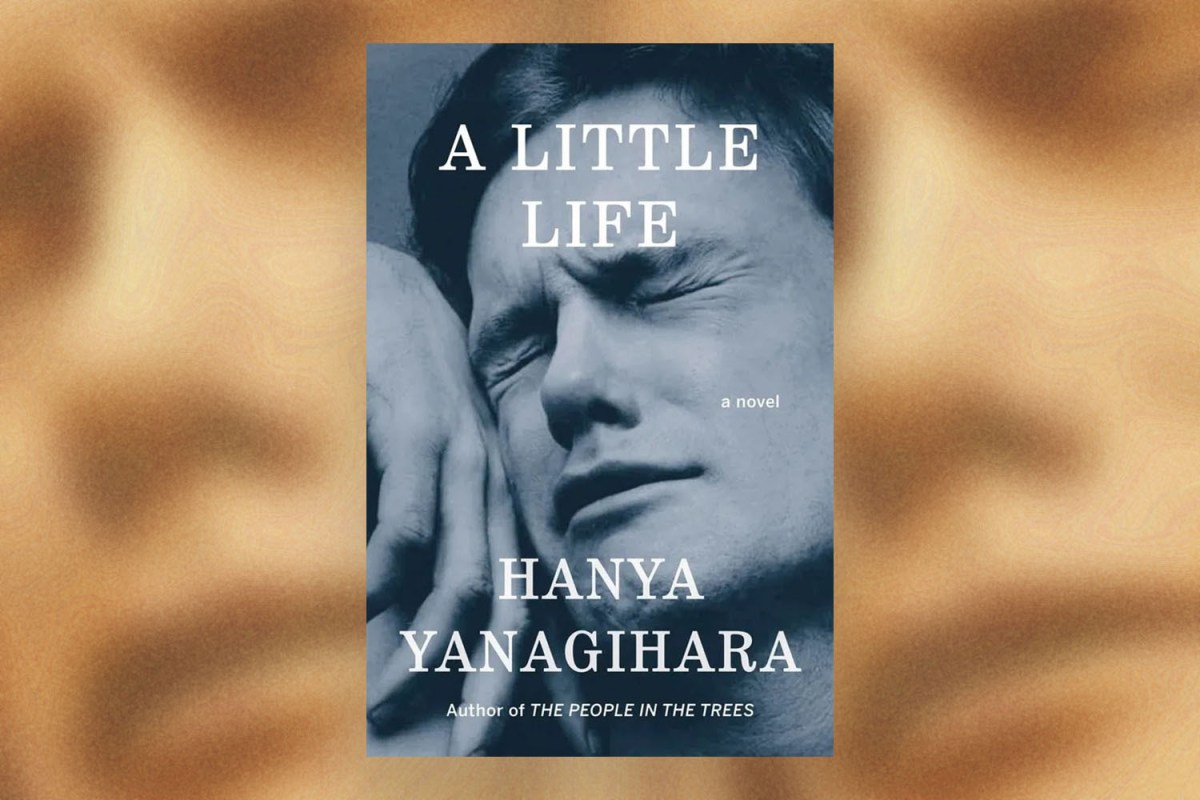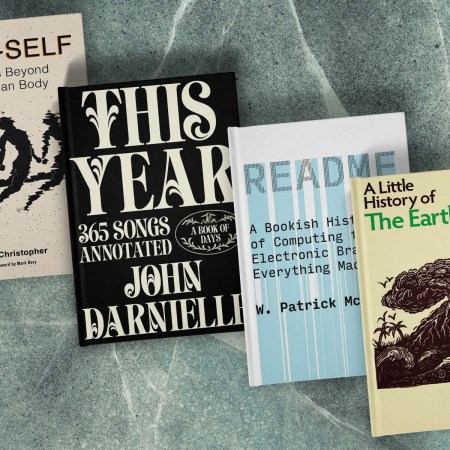A Little Life, a book first published in March 2015, is suddenly inescapable. You’ve probably seen the unmistakable black and white cover image of a man (crying? mid-orgasm?) show up on Best-Of lists or celebrity recommendations (from Queer Eye’s Antoni Porowski, Dua Lipa, to Kaia Gerber). But when I succumbed to the hype and picked up my copy recently, the cashier put his hand on the cover, looked me in the eyes and said: “Are you ready for this? Really?”
Was I?
The book’s list of trigger warnings include but are not limited to: child abuse, drug abuse, rape, suicide, and graphic depictions of self-harm. Reviews on Amazon show the range of responses from readers who have subjected themselves to the over 700-page long novel: “great book if you want to torture yourself. i loved every second.” “Masterpiece, but stay away from it, it will make you cry like the time your first dog died, be warned.” “Calling this novel “sad” is a massive understatement”. “A Little Life. 5 stars. Not for everyone.”
Not for everyone, but it’s still selling like mad. Over a million and a half copies in English alone, in fact, since its release in 2015. The author, T Magazine Editor-in-Chief Hanya Yanagihara, has become shorthand for intellectual cool. Most recently, Drake put a shoe on top of Yanagihara’s newest book, To Paradise, released in January 2022, while showing off his book stack.
People are drawn to this book, and keep recommending this book, even though the content is known to be challenging — even at the best of times. (Insert your own COVID anxieties or nuclear paranoia here.) So the question becomes, why does this book, riddled with dark content and seeming continuous trauma throughout it, still attract readers?
The short answer is the best answer: it’s a social media star in its own right.
Search for it on YouTube and you’ll find videos of book-tubers (the name for the community that reads and reviews books on the platform) sobbing over, well, pretty much the entire thing. On Book-Tok (the same community on Tik Tok) there are videos of people’s real-time reactions to the book, and is recommended as a book to read to cause a “good, ugly cry,” or as a “red flag,” similar language to a New Yorker review that said this book will “drive you mad, consume you, and take over your life.”
A Little Life was a Man Booker Prize Finalist and a National Book Award Finalist, and has gone through waves of popularity on various social media platforms thanks to the “challenge” aspect of reading it. From The Guardian in 2016, the writer says that “people have shared their intensely emotional responses [On Twitter]… they have called it ‘upsetting’, ‘harrowing’ and ‘traumatic’. But many also say it’s the best book they have ever read.” In a New Yorker interview with Yanagihara in 2022, the interviewer notes that “It’s still easy to find readers talking online, with odd pleasure, about the emotional devastation that reading A Little Life brought upon them.” The book exploded in popularity on Tik Tok during COVID, with the tag #alittlelife being viewed over 87 million times.
The world of A Little Life is unceasingly bleak. It follows four friends after they graduate from college, living in New York, dating, having sex, and growing up. It also has, as previously stated, a million and one content warnings for incidents of trauma that the characters experience throughout their lives. Our main character Jude is disabled and an abuse survivor, while another protagonist, JB, is a meth addict. There are instances of domestic violence, and child sex abuse is discussed throughout the book. The content is at times enough to make you flinch (or in the case of the content creators, sob on camera), but the novel is filled with undeniably beautiful prose. Of all the dark content included in the novel, Yanagihara’s writing on grief were the parts of the novel that I thought about late into the night.
Positive reviews from critics and -tubers and -tokers say that the reason they got into the book and stayed in it through the graphic content is because of the vivid world that Yanagihara creates. The characters feel fully formed and their struggles and their trajectories feel human: their successes, their failures, and the way that they view themselves and the world. They feel like people you could know, or have known, or maybe they feel like you, if dialed up to 1000.
But there’s a more clear cut reason as to why this book continues to get recommended, as Book-Tuber Olivia-Savannah of the channel “Olivia’s Catastrophe” explains. A 10-year veteran of the Book-Internet, she posted a “Rant Review” of A Little Life in July of 2021. She explained that the sense of mystique built around the book was what appealed to her. “It’s a big book,” she laughs, “There’s such a big sense of accomplishment once you get your way through a big book. It’s nice to, especially online, create content around something that’s big that you take the time to dig into and everything like that.” She decided to begin the book when she saw other content about it being made on YouTube and Tik Tok. “There’s also something about when a book reaches a level of popularity, you want to know what people are talking about,” she explains. “You want to get involved. I feel like loads of people I know have tried to, or read, A Little Life. You want to be in the ‘in-circle’.”
Olivia-Savannah was left disappointed and frustrated finishing the book. She’s not alone: the book might be widely popular, but it has its fair share of negative reviews on subjects like the melodramatic and at times overly excessive graphic elements included in the novel, to more severe critiques on Yanagiahara’s approach to topics like race, LGBT+ representation, and the questionable disabled representation throughout the book (Jude, the disabled protagonist, frequently calls himself and is called “deformed,” and has suicidal ideation because of his disability, a narrative which the disabled community has actively fought against.)
“I consume a lot of disabled narratives because of the fact that I used to be a carer and there’s someone in my life who’s very important to me who is disabled.” Olivia-Savannah explains, “There’s just such a big difference in a disabled narrative written by somebody who is disabled themselves versus someone who is just on the outside of the community looking in and maybe doesn’t have connections to the disabled community. I cannot speak to the author, of course, because I don’t know who she knows in her life, but in terms of the narrative that we see a lot with disabled books, I feel like it was quite repetitive. You look at how those books always end, and you can take the ending at face value and be like, Oh, this is sad. Or you can look into the wider perspective of how many times we see the story. Where does it always end? But should the ending always be there?”
Olivia-Savannah doesn’t think no one should read the book, but that they should be aware of how dark the content can be. “I would say if you do have your own triggers, definitely check the content warnings. There’s quite a few of them,” she says. “I wouldn’t want to discourage anybody from reading the book, but I would say while you’re reading it, just think about the implications of this book. And maybe also read some narratives that are on voices alongside it, or after, or before.”
Multiple things can be true: the representation of characters of color, disabled characters, and LGBT+ characters in the book is far from perfect, and worthy of critique. This book shouldn’t be taken as the be-all end-all for stories about disability or queerness. Yanagihara’s prose is also devastatingly beautiful and feels deeply human.
Of course the question of why humans love tragedy has been floating around since we’ve been able to ask it. But the psychological reason is simple: the point of sad books is that we want to feel something from them. A study from Erasmus University found that the most common reason for reading sad books given by respondents was that “sad books may fulfill the need for empathizing with characters better than more cheerful books…readers may empathize more readily with fictional characters in sad or difficult situations.”
Jude experiences the worst of the worst throughout the book, but all of the characters suffer in some personal way. While we read the book, we feel for each character as if we know them, a testament to Yanagihara’s craft. The moral of the book is that Jude might not ever be healed by his relationships (in fact Yanagihara wrote him to never be “healed” from his trauma, as controversial as it makes the narrative), but we see the love he has for other people, that other people have for him. It reminds us that if we don’t see the impact we make on others, it’s still there.
Perhaps the book remains popular because that tragedy of not seeing your own impact feels so human, and has been no more true than over the past two years, while the book started taking off in popularity again. It might feel good to have your tragedy contained in the pages of a novel instead of in your real life for once, to feel catharsis from other people even if those other people are fictional. While life adapted to COVID and we were unable to access our social groups the way we wanted to, you could, instead become a part of the A Little Life group, and get your catharsis and shared experience through the act of submitting yourself to a brick of a novel everyone has said not to read. I absolutely felt the allure of the book as I trudged through each trauma and heartbreak. It didn’t destroy me, like Tik Tok said it would, but it certainly made me think, and I absolutely felt pride when I was able to conquer a book that I’d watched so many people shed tears over.
But really, don’t read it. Unless…
This article appeared in an InsideHook newsletter. Sign up for free to get more on travel, wellness, style, drinking, and culture.

























